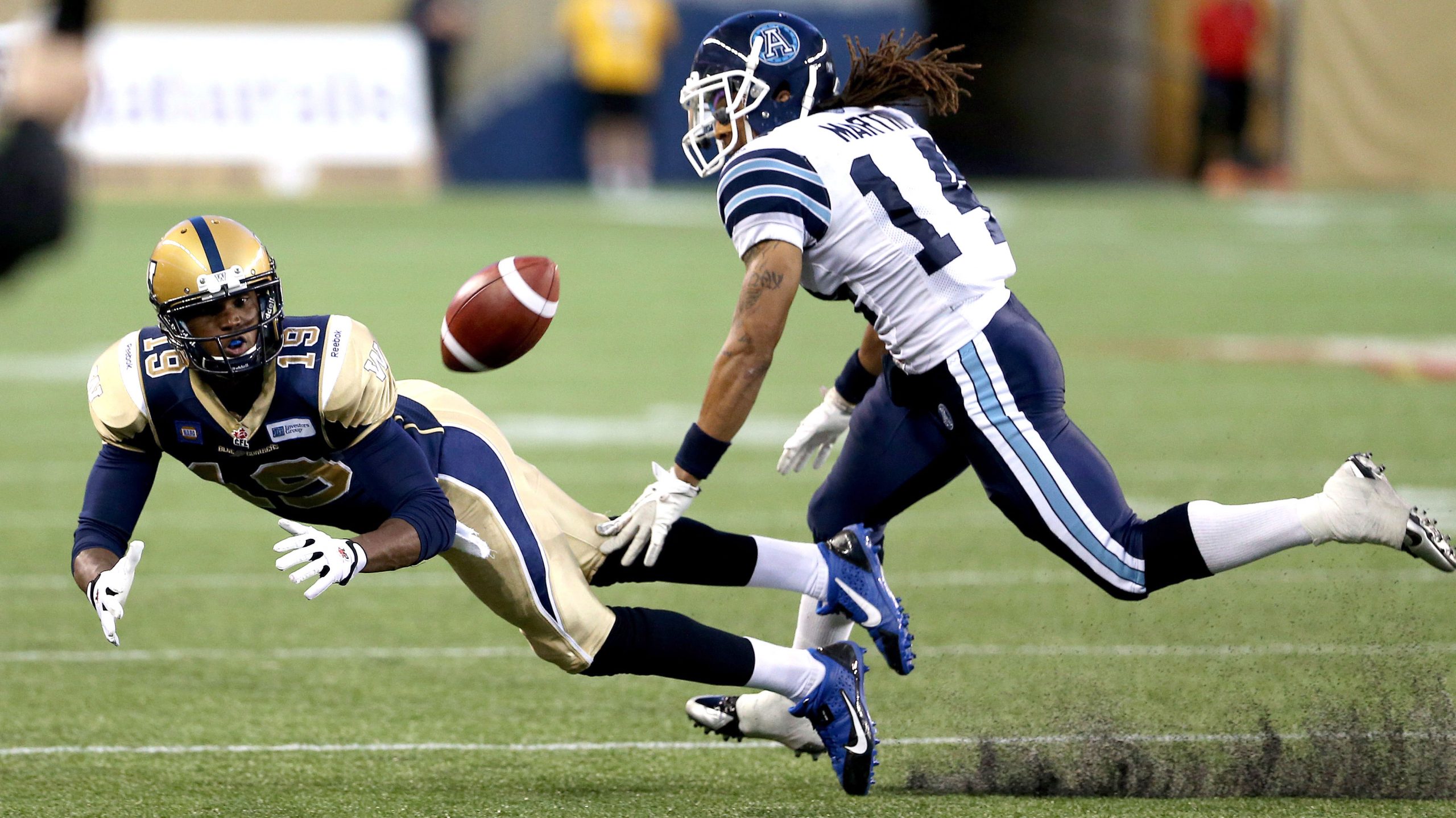CFL players are among the last pro athletes to earn regular folks’ wages. Why don’t their fans stand up for them?
IT HAS ALWAYS been difficult for fans to reconcile the fact that for their heroes, sports is a living.
Not that they don’t know that; not that—forever, really—the discussion around professional sports hasn’t included plenty of talk about who makes what (Babe Ruth earning more than Herbert Hoover, to cite one famous example).
But there has always been a resentful undercurrent, a reluctance to link our passion for the games, the value created as a direct result, and fair compensation for those we pay to watch.
Look all the way back to the player holdouts in the good old days of servitude, to the labour disputes soon after athletes started organizing in the 1960s, and even then you’ll see the same things: Owners pleading poverty and being believed, players being labelled as greedy, union heads being accused of not telling the truth to those who employ them.
There was some righteous backing for Curt Flood as he fought baseball’s reserve clause; there was some support for the baseball players as they battled against a salary cap and for hockey players in their earliest clashes with the NHL, but those were exceptions. These days, most sports consumers, tired of seasons shortened and asterisked because of strikes or lockouts, can’t summon an ounce of sympathy for players.
That’s the case even when players have a legitimate beef, as they do right now in the Canadian Football League. Everyone in this country knows the history, knows that the game has been around forever, and that during the latter stages of the 20th century it struggled to remain relevant and profitable in a rapidly changing marketplace.
As a result, CFL players are among the last professional athletes who earn regular folks’ wages, sometimes pursuing second careers just to make ends meet. The minimum CFL salary in 2013 was $45,000, the average $72,000. In an era of millionaire athletes, that humble pay scale has been cited as part of the league’s appeal—although that appeal wasn’t enough to keep the Toronto Argonauts and Hamilton Tiger-Cats from declaring bankruptcy in 2003.
But the persistent image of the CFL as a business on life support is no longer accurate. Even before signing a new television deal with TSN that will up the annual payout from $15 million to $40 million starting this season, the league as a whole was in the black. There are challenges in some markets—most notably Toronto—but there are also crazy runaway successes, like the publicly owned franchise in Saskatchewan. And because the Grey Cup game has become a money-maker for whoever hosts it, there is also a regular opportunity for owners to make up for losses. (David Braley, for instance, who by virtue of his ownership of the Argos and B.C. Lions controls more than 20 percent of the league, staged Grey Cups in 2011 and 2012—the latter the 100th championship game in Toronto, which benefited from a very generous federal government subsidy—and will host the 2014 game in Vancouver later this year.)
The days of telethons and tag days are over, so it would figure that the players would be offered the chance to share the new-found wealth.
Nope.
The simple version of the current negotiations: In their last contract, the players agreed to a cap system disconnected from revenues. It was a huge—and, as it turned out, unwise—concession, offered up to give the struggling owners a break. Now the players would like to reattach the cap number to a percentage of revenues, which seems fair, since that’s the system employed in every other major league with a cap.
The league says no thanks. Instead, in the first year, it has volunteered to raise the cap by $400,000 per team—which represents a little more than 14 percent of the increase in television money. Rather than negotiating on that number, it issued a press release, making its case directly to a fan base that will almost surely buy in. Owners have pledged not to lock players out when training camps open at the beginning of June, but they’re clearly willing to take their chances with a strike, understanding that an untested union might well crumble the minute the first paycheques are missed.
It’s a funny thing, the fact that there’s no rallying cry to the players’ cause, when you consider the modest salaries, the absence of guaranteed contracts and the short careers. And there is also the toll this violent game takes. Read the latest lawsuit filed by former NFL players related to team doctors and the reckless use of prescription drugs. It’s horrifying, more evidence of athletes being treated like meat. Though the CFL isn’t the NFL, the pain and the danger are the same.
But they’re getting paid to play a game, right? They get to walk out onto the field wearing the uniform, cheered on by the crowd, living out our fantasy, doing what we’d do—or rather what we claim we’d do—for free.
You can’t take the kid out of the sports fan, and sometimes that gets in the way.
This story originally appeared in Sportsnet magazine. Subscribe here.


